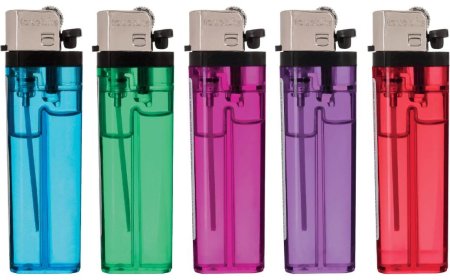Sharpen Your Edge: Essential Business Intelligence Exercises for Every Analyst
Sharpen Your Edge: Essential Business Intelligence Exercises for Every Analyst
Business Intelligence (BI) isn't just a nice-to-have these days; it's a must-have for businesses that want to get ahead. But just having access to data isn't enough; the real power comes from finding useful information and using it to make plans. This is where strong BI skills really shine, and like any skill, you get better at them with practice.
It's important to do business intelligence exercises BI exercises on a regular basis, whether you're a seasoned BI professional, an aspiring data analyst, or a business user who wants to make better decisions based on data. They help you remember what you've learned, make you better at solving problems, and keep you up to date on the latest data tools and trends.
To help you get better at business intelligence, here are some important exercises for each skill area:
I. Exercises for Understanding and Preparing Data
You have to know what your data means before you can even start to analyze it. These exercises are all about the basic steps of the BI process.
The "Know Your Data" Deep Dive is all about fully understanding the structure, content, and any problems that might come up with a specific dataset. Choose a dataset you don't know well to practice with. Kaggle, government data portals, or even a sample from your own organization are all good places to find them. Your job is to find all the tables and how they are related, check the data types for each column, find missing values or outliers, and calculate basic descriptive statistics like the mean and median. Make a note of any problems with data quality or inconsistencies you find. SQL, Python (Pandas), R, and Excel are all great tools for this.
The goal of a Data Cleaning Challenge is to find and fix common problems with data quality. Get a "dirty" dataset. This could be one that you messed up on purpose or one that is known to be very messy. You need to deal with missing values (by filling them in or deleting them), fix data entry errors (like using "USA," "U.S.A.," and "United States" for the same country), get rid of duplicate records, make sure all the formats are the same, and get rid of data that isn't useful. If you want to get the most out of this, you should use SQL, Python (Pandas), Excel, or ETL tools.
Data Transformation & Feature Engineering shows you how to change and add to data so that it can be analyzed. Begin with a raw dataset and add new fields or combine values to make new ones. This could mean figuring out "Age" from a "Date of Birth," "Sales Per Customer," or "High Value" vs. "Low Value" customers based on how much they buy. It could also mean combining data at different levels of detail, like daily sales to weekly or monthly sales. These tasks are best done with SQL, Python (Pandas), Excel, and BI tools that can change data.
II. Exercises in analyzing data and coming up with new ideas
The "Why Did This Happen?" Drill helps you learn how to analyze and diagnose problems to find their root causes. Think about what would happen if a key number changed suddenly, like "Sales dropped by 15% last quarter" or "The conversion rate on the website went down." Come up with ideas about what might have caused it, and then use your data to see if each one is true. To find the cause of the change, look at different aspects like product, region, customer segment, or marketing channel. Then, use visuals to support your conclusions. It will be very helpful to know SQL, Python (Matplotlib, Seaborn), R (ggplot2), Excel, or any BI visualization tool like Tableau or Power BI.
The goal of a Comparative Analysis Challenge is to help you learn how to find patterns and outliers by comparing different groups or time periods. Compare how well two or more things do, like sales for Product A and Product B, or look at how much it costs to get new customers through different marketing campaigns. You could also look at how website traffic changes from weekdays to weekends and find the best performers to learn more about them. You should use SQL, Excel, and BI visualization tools.
Basic Forecasting & Trend Prediction teaches you the basics of time-series analysis and forecasting. Try to guess what future values will be based on past data, such as monthly sales or website visits. You can see trends and seasonality, figure out simple moving averages, and look into basic linear regression for predicting trends. Try out more advanced forecasting models if you feel like you're ready for them. For this exercise, Excel, Python (SciPy, Statsmodels, Prophet), and R are all great tools.
III. Exercises for visualization and communication
The "Storytelling with Data" Project shows you how to turn your data into interesting visual stories. Choose a dataset and find a problem or key insight that you want to show off. Pick the best kinds of charts to get your point across, and then make a dashboard or a set of visualizations that tell a clear and simple story. Always think about your target audience when you use titles, labels, and notes. Also, practice saying what you found out. You can use Tableau, Power BI, Qlik Sense, Looker Studio, Excel, and Python (Matplotlib, Seaborn, Plotly) for this.
The goal of a Dashboard Optimization Challenge is to make existing dashboards easier to use, clearer, and more useful. Look for a public dashboard that is hard to use or poorly designed (or make up one). Find things that could be better, like too much clutter, unclear metrics, bad color choices, or not enough interactivity. Then, make the dashboard easier to use and more useful, and be ready to explain why you made the design choices you did. You can use any BI tool to make a visualization here.
IV. Exercises for Business Sense and Problem Solving
It's very important to know the business context in addition to the technical skills.
The "Business Problem to Data Question" Translation helps you connect business problems with questions that can be answered by data. If you have a business problem, like "How can we keep customers from leaving?" or "Where should we open our next store?" think about the data you would need and the specific questions you would ask of that data to solve the problem. Find the right KPIs (Key Performance Indicators), figure out where you can get the data, come up with specific, answerable questions about the data, and think about any problems that might come up with the data's quality or availability. A simple pen and paper or a whiteboard session can work very well.
Impact Estimation & ROI Calculation teaches you how to measure the possible effects of your ideas and suggestions on a business. Based on a made-up analytical finding, like "Identifying and targeting at-risk customers could reduce churn by 5%," guess how much money it would cost. Find metrics that matter, like the average customer lifetime value or cost of acquisition. Do the math to figure out how much money you might save or make, and think about any assumptions you're making and what they mean. This is where Excel or basic financial modeling tools come in handy.
To get the most out of these BI exercises, always remember to start small and work your way up to bigger problems. This will help you build your confidence. When you can, use data from the real world that is similar to how businesses work. Write down your process, including your hypotheses, questions, results, and any problems you ran into. This is very helpful for learning and fixing bugs. Ask your peers or mentors for constructive criticism without hesitation. Keep asking "why?" and "what if?" to push your analysis even further. Practice and learn about new features all the time to get better at your tools, whether they are SQL, Python, Excel, or a BI platform. Working together can also help you learn faster and give you new ideas. Always tie your analysis back to the main business problem and how it might affect the business, focusing on real business value.
By regularly doing these kinds of business intelligence tasks, you'll not only improve your technical skills, but you'll also develop the critical thinking and problem-solving skills you need to do well in the fast-paced world of data. Your BI insights will become more intuitive and useful the more you use them. So, get ready to work and pick a dataset to work on today.











































